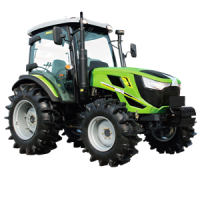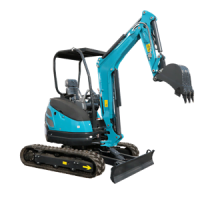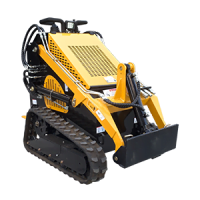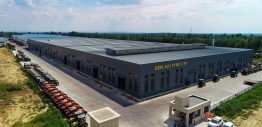Introduction
Tractors are powerful machines that play a vital role in modern agriculture. At the heart of these machines lies the engine, a complex piece of machinery responsible for converting fuel into mechanical energy. This article delves into the intricacies of a tractor’s engine, exploring its working principles, components, and the technology behind its efficient operation.
Table of Contents
- Basic Engine Operation
- Combustion Process
- Four-Stroke Cycle
- Key Engine Components
- Cylinder Block and Pistons
- Crankshaft and Camshaft
- Valves and Cylinder Head
- Fuel Injection System
- Types of Fuel Injection
- Common Rail Technology
- Cooling and Lubrication
- Cooling System
- Lubrication System
- Turbocharging and Power Output
- Turbocharger Functionality
- Power Generation
- Complexity and Burstiness in Engine Design
- Emission Control Systems
- Electronic Control Units (ECUs)
- FAQ About Tractor Engines
Basic Engine Operation
 Combustion Process
Combustion Process
A tractor engine operates based on the principle of internal combustion. This involves igniting a fuel-air mixture within a confined space, resulting in a controlled explosion. The energy generated from this explosion is harnessed to power the engine’s moving parts.
Four-Stroke Cycle
Most modern tractor engines use a four-stroke cycle: intake, compression, power, and exhaust. In the intake stroke, air and fuel are drawn into the cylinder. During the compression stroke, the mixture is compressed to increase its energy potential. The power stroke follows, ignited by a spark plug, causing an explosion that drives the piston down. Finally, the exhaust stroke expels the burned gases from the cylinder.
Key Engine Components
Cylinder Block and Pistons
The cylinder block houses the engine’s cylinders, where combustion occurs. Pistons are situated within these cylinders and move up and down as a result of the four-stroke cycle. This motion is transformed into rotational motion through the crankshaft.
Crankshaft and Camshaft
The crankshaft converts the reciprocating motion of the pistons into rotational motion, which drives the tractor’s wheels. The camshaft controls the opening and closing of valves, synchronizing them with the engine’s operation.
Valves and Cylinder Head
Valves regulate the flow of air and fuel into the cylinders and the expulsion of exhaust gases. The cylinder head contains the valves, spark plugs, and often the fuel injector.
Fuel Injection System
Types of Fuel Injection
Tractor engines utilize various fuel injection systems, including direct injection and indirect injection. Direct injection delivers fuel directly into the combustion chamber, while indirect injection delivers fuel to a pre-chamber.
Common Rail Technology
Common rail fuel injection systems are popular in modern tractors. This technology pressurizes fuel in a common rail and delivers it to the injectors with high precision, enhancing fuel efficiency and performance.
Cooling and Lubrication
Cooling System
Tractor engines feature cooling systems to manage heat generated during combustion. Radiators, coolant, and fans work together to maintain optimal operating temperatures.
Lubrication System
The lubrication system ensures moving parts are properly lubricated to minimize friction and reduce wear. Oil is circulated through the engine and passed through filters to remove contaminants.
Turbocharging and Power Output
Turbocharger Functionality
Many modern tractor engines employ turbochargers to increase power output. A turbocharger uses exhaust gases to drive a turbine, which forces more air into the combustion chamber, resulting in enhanced combustion and power.
Power Generation
A tractor’s engine power is measured in horsepower (hp) and torque. Horsepower determines the engine’s ability to perform work, while torque measures its rotational force.
Complexity and Burstiness in Engine Design
 Emission Control Systems
Emission Control Systems
Modern tractor engines adhere to stringent emission standards. Emission control systems, such as selective catalytic reduction (SCR) and diesel particulate filters (DPF), reduce harmful exhaust emissions.
Electronic Control Units (ECUs)
Tractor engines are equipped with electronic control units that monitor and optimize various engine parameters. These ECUs ensure efficient fuel consumption, performance, and emissions.
FAQ About Tractor Engines
Q1: How do turbochargers improve engine performance?
A1: Turbochargers increase air intake, leading to better combustion and increased power output.
Q2: What is the purpose of an ECU in a tractor’s engine?
A2: The ECU manages engine functions, optimizing fuel injection, ignition timing, and emission control.
Q3: Can tractors run on biofuels?
A3: Yes, many modern tractors are designed to run on a variety of fuels, including biodiesel and ethanol blends.
Q4: Are there differences between gasoline and diesel tractor engines?
A4: Yes, diesel engines are more fuel-efficient and produce greater torque, making them suitable for heavy-duty tasks.
Q5: How do emission control systems work?
A5: Emission control systems use technologies like SCR and DPF to convert harmful exhaust gases into less harmful substances.
Conclusion
A tractor’s engine is a marvel of engineering, blending precision, power, and efficiency. Understanding its workings, from the combustion process to the role of modern technologies like turbochargers and ECUs, sheds light on the complexity that drives agricultural productivity. As technology continues to evolve, so too will the engines that power the machines responsible for feeding the world.





-1.png)